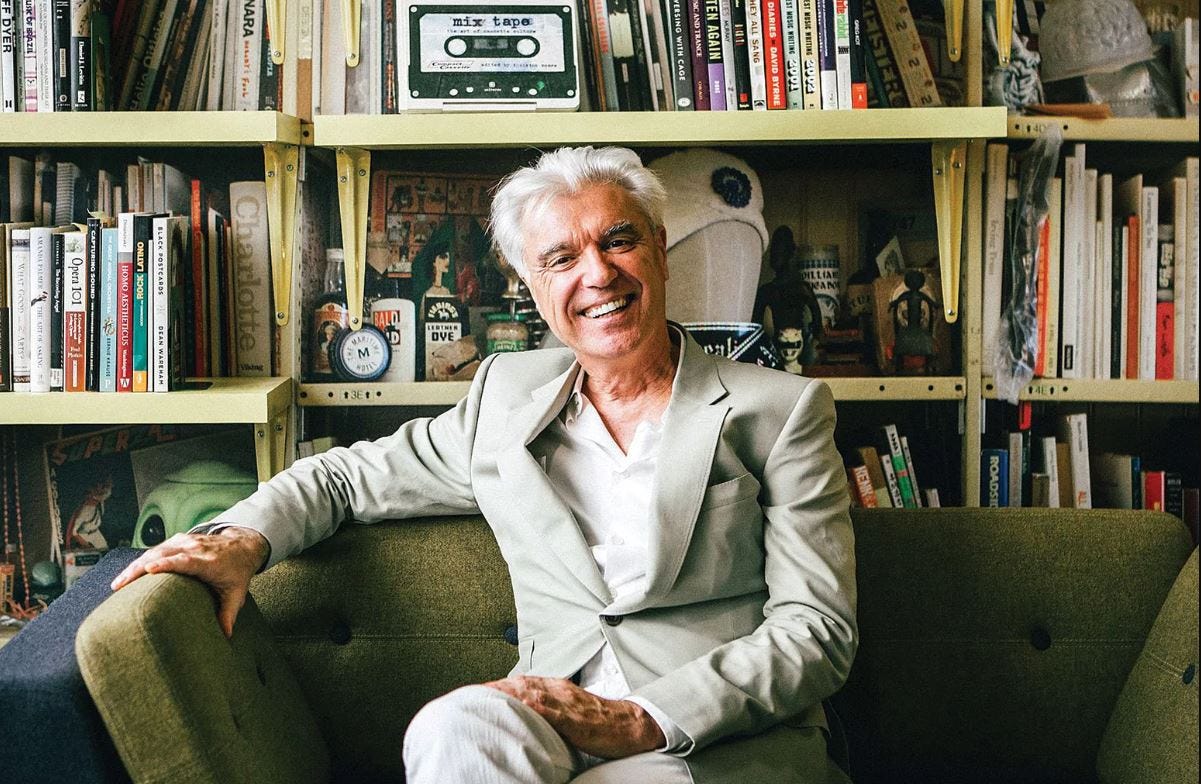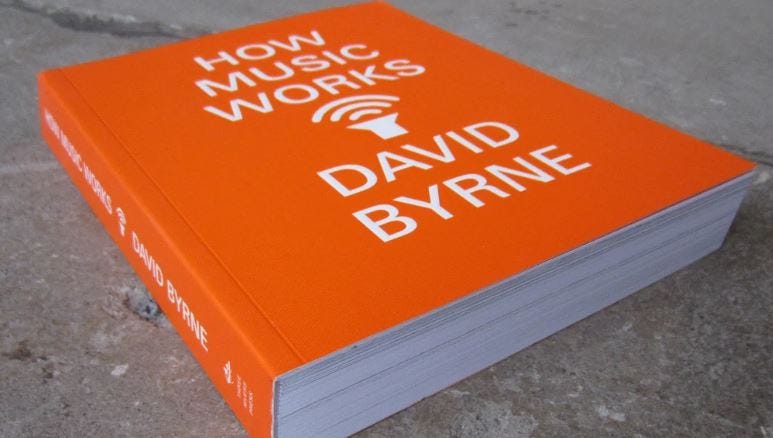David Byrne and the context with which we create art
David Byrne, the iconic leader of Talking Heads and many other exceptional artistic pursuits, thinks the accepted narrative of artists finding creative inspiration from within is the exact opposite of what really happens. He writes, in his book How Music Works, that he thinks music is shaped by external forces. “Context largely determines what is written, painted, sculpted, sung, or performed.”
Drum music, for instance, sounded and sounds really great in the open spaces of Africa. It would sound terrible in a school gymnasium or a cathedral and nobody would want to hear it. Byrne thinks these instruments were invented to fit the situation rather than being some implication of unsophistication.
Classical music was loud and boisterous, and then around 1900, concert attendees were no longer allowing talking, eating, and dancing during performances, which had the effect of composers adding more dynamics to the tunes and “I guess it was assumed that the lower classes were inherently more noisy.”
By the time radio came out, people were hearing tons of music at home and elsewhere and “an audience who heard and loved a song on the radio naturally wanted to hear that same song at the club or the concert hall. The compositions were expected to be the same! These two demands seem unfair to me.” Frank Sinatra and Bing Crosby became two examples of singers who adjusted their dynamics for various settings in ways unheard of before.
Later, arena rock in the 1970s and 80s sounded, to Byrne, like “a soundtrack for a gathering, and listening to it in other contexts re-creates the memory or anticipation of that gathering - a stadium in your head.”
He writes that hip-hop, at least the music for it, is written to play in your car. The audio space “forces a very different kind of composition” that’s bass heavy but with a strong and precise high end and vocals in the middle.
The rise of private listening since the Sony Walkman was introduced in 1979 has returned the music experience in similarity to the music halls of the classical era when distractions and interruptions were not permitted. Music is now even more private.
Birds do all this same stuff as well. Their calls have adapted to the environment.
“In dense jungle foliage, a constant, repetitive, and brief signal within a narrow frequency works best. If the intended recipient doesn’t get the first transmission, an identical one will follow.”
Birds that live low to the ground have lower-pitched calls that don’t bounce. Water birds have ones that cut through the ambient sounds of water. Birds of the same species often adapt their calls to their changing environments, like when they land in San Francisco or some other city and have to raise their pitch to be heard over the traffic.
It’s not that Byrne thinks we don’t put our emotions and our reactions into our art. It’s just that there’s a layer - not often considered - in which we’re putting them into forms “that perfectly fit some emerging context.”




